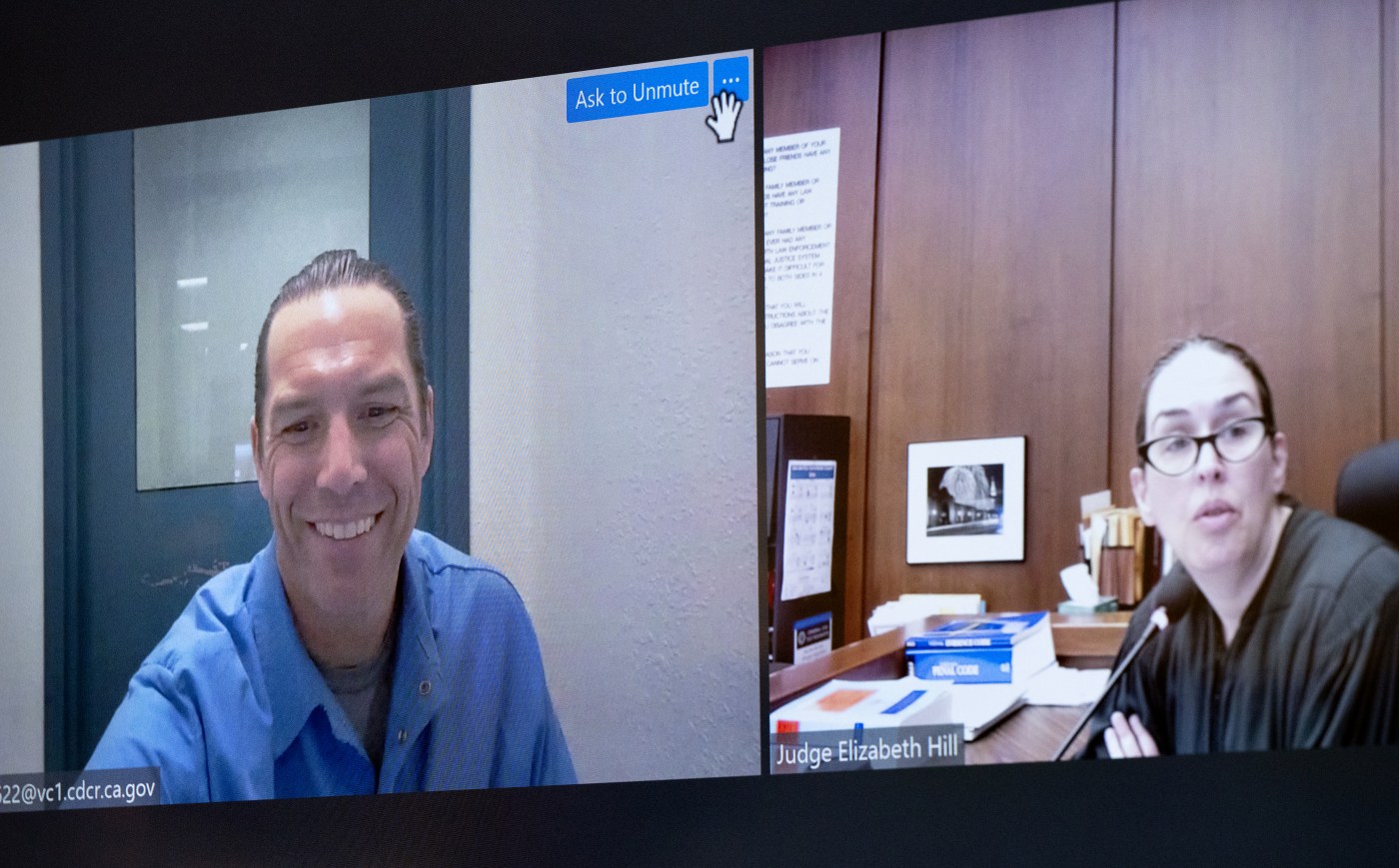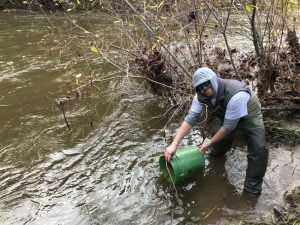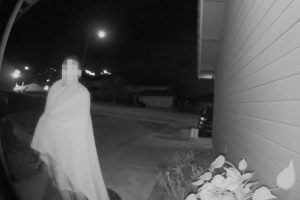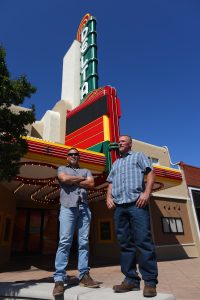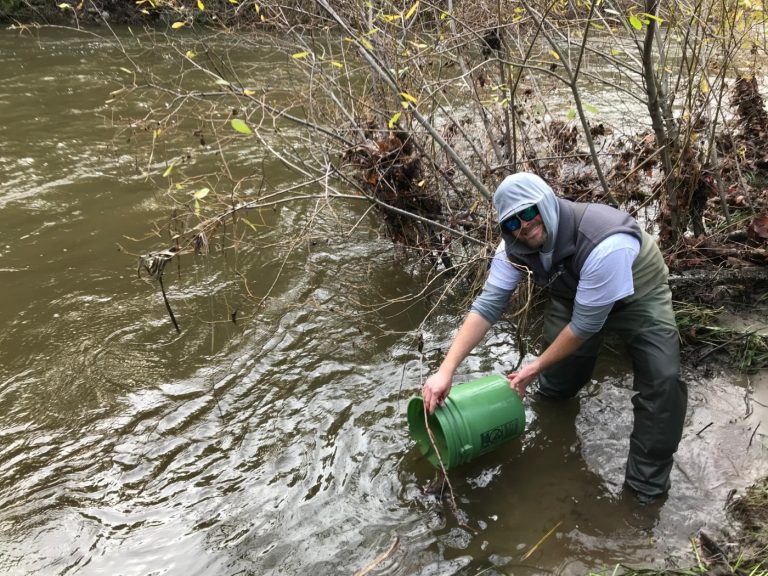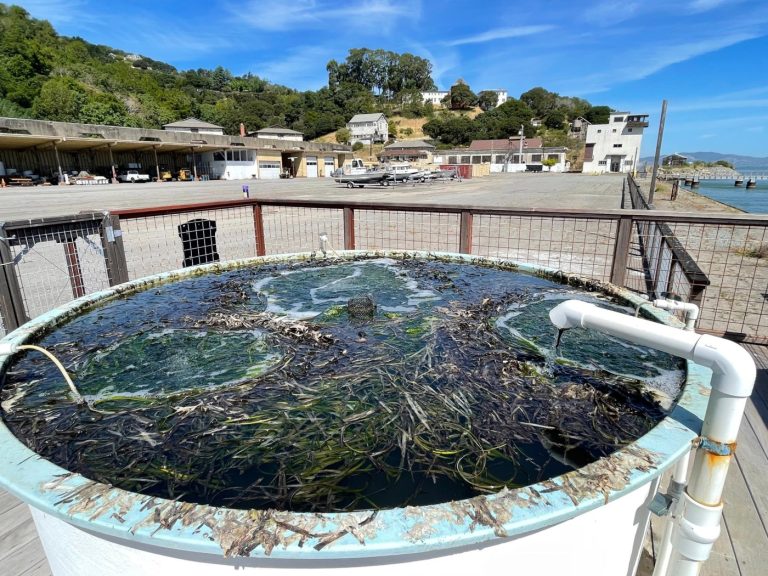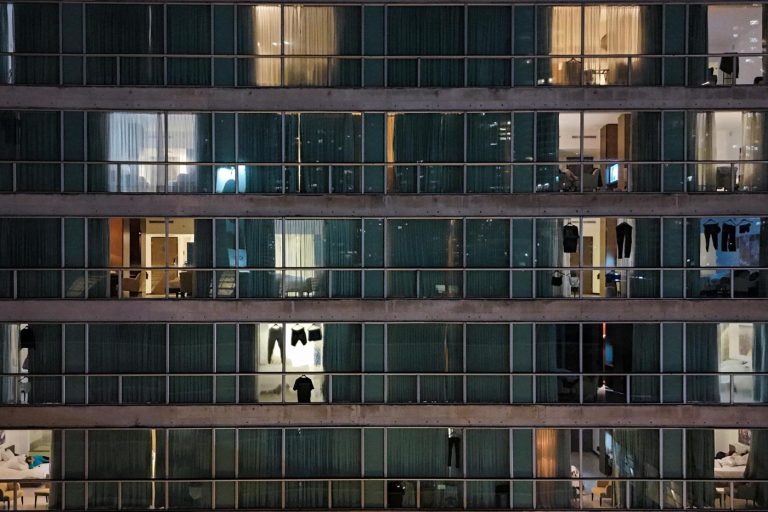REDWOOD CITY — The day Scott Peterson was convicted of murdering his pregnant wife, Laci, 20 years ago, cheers rose up from a boisterous crowd packing the courthouse plaza.
The spectators who had spent nearly six months glued to coverage of the infamous trial and jockeying for coveted seats in the courtroom were largely unified with the jury: Peterson was guilty.
The case has been the subject of enduring fascination ever since Laci Peterson, a dimple-cheeked substitute teacher nearly eight months pregnant, disappeared from her Modesto home on Christmas Eve 2003 and four months later washed up separately from her unborn child on the Richmond shoreline.
The trial, moved from Modesto to Redwood City because of overwhelming pretrial publicity, pitted well-heeled L.A. defense lawyer Mark Geragos against Stanislaus County prosecutors, two of whom remain on the case.
But on Wednesday, after two decades of efforts to overturn the verdict, a fresh group of defense lawyers from the Los Angeles Innocence Project will try to convince a judge that old DNA samples from a bloody mattress in Modesto, and other pieces of evidence that washed up along the San Francisco Bay, must be retested to support Peterson’s claim of “actual innocence.”
It could be his last chance at freedom.
In an extraordinary 337-page argument, however, prosecutors didn’t just lay out why they opposed handing over the evidence. In meticulous detail, they also reminded readers exactly why the handsome fertilizer salesman from Modesto was convicted in the first place. Page by page, they listed nearly every shred of evidence they presented at trial, including photographs and transcript excerpts.
“They want the public to know that, at least in their mind, they got it right,” said Steven Clark, a legal analyst who followed the trial in 2004.
The brief includes memorable highlights as well as deep details that prosecutors presented at trial to convince the jury that although their case was circumstantial, it was more than enough to prove Peterson killed his wife. They include:
Two weeks before Laci disappeared, Peterson told his secret mistress, Amber Frey, he had “lost” his wife and would be spending his first Christmas without her.
Days later, he bought an aluminum fishing boat but never told anyone, including his father-in-law who was an avid fisherman. During a family dinner party a week before Laci vanished, they all discussed fishing, but Peterson never mentioned the boat.
When Peterson returned from the Berkeley marina the afternoon of Christmas Eve, he told a neighbor he had spent the day golfing. He called his mother-in-law and told her “Laci is missing.”
The bodies washed up not far from where Peterson later told police he fished the day Laci disappeared. In one of his first conversations with a police officer, he hesitated when asked what he was fishing for and what lures he used.
Police found cement “rings” on the floor of the storage space where they believe he made anchors to sink Laci’s body. Only her torso was found.
A month after Laci disappeared – and three months before her body was discovered – Peterson traded in her Land Rover for a Dodge truck and called a realtor about selling their house that included the fully furnished nursery for the baby they planned to name Conner.
The case has been a national sensation from the start; from the National Enquirer to Nancy Grace, the throngs of media that breathlessly reported each day’s testimony at the trial echoed “Camp O.J.” in downtown Los Angeles where football legend O.J. Simpson was acquitted nearly a decade earlier.
Media coverage, including the production of numerous documentaries on the case, rebounded in recent years after the state Supreme Court overturned Peterson’s death penalty due to the dismissal of certain potential jurors but upheld his conviction on murder charges. Peterson left San Quentin’s Death Row and is now serving a life sentence at Mule Creek State Prison in Amador County. Last year, his lawyers failed in their attempt to overturn his conviction based on alleged juror misconduct.
Now, the L.A. Innocence Project, which has a staff of six and is independent of the well-known national Innocence Project, is renewing another theory of the case first floated to jurors during the trial: that Laci was abducted by men who burglarized a house across the street.
The homeowners left for a Christmas holiday the morning Laci disappeared, and couldn’t pinpoint which day the house was broken into. The burglars were arrested, but the prosecution ruled them out as suspects and the defense never called them to the stand.
The nonprofit wants to find out if a burned-out orange van discovered that Christmas morning was connected to the burglary and if blood on the mattress inside the van was Laci’s. Over the years, the blood from the mattress was tested twice, in 2013 and 2019. Human DNA was detected, but the results were insufficient to determine a genetic profile.
If the judge grants their request, the defense lawyers intend to send the DNA samples to the Serological Research Institute in Richmond, a forensic lab with equipment that can “obtain significantly more DNA from certain challenging samples than the standard swabbing method,” they said in their 142-page brief.
The defense lawyers are also requesting DNA testing of plastic twine found wrapped and knotted, they say, “in a bow” around the neck of Laci’s baby to determine whether the child had been born, then strangled by unknown assailants — another defense theory offered at trial.
In their opposition brief, prosecutors said the twine was ocean debris that tangled as easily as a string of Christmas lights. They also recounted the testimony of the medical examiner who conducted the autopsy and said the baby was not born vaginally, nor was her uterus cut to remove the baby. Her womb protected her unborn son until the top of her uterus gave way when bay waters were churned by an April storm. Mother and child drifted apart and were found separately on shore. The baby was in remarkably preserved condition.
Retesting for DNA on the mattress or on the twine would not produce a different outcome, the prosecutors said, and doing so “would just subject the victims’ family to grief and hardship.”
“There is no valid reason for DNA testing,” the brief concluded. “The defendant’s attempts to cobble a theory together has demonstrated time and time again that the evidence was known at the time of the trial, was, in some instances, tactically disregarded by the defense and then, when presented to the jury, was rejected.”
Peterson’s theory that someone else killed his wife, they said, “is based entirely upon conjecture and speculation.”
The fact that prosecutors don’t want to release the DNA evidence is puzzling to legal analyst Michael Cardoza, who also followed the original trial.
“Why not give the Innocence Project everything they need to put this case to rest?” Cardoza asked. “They should explore every avenue in a case of this magnitude to be sure that the conviction is, in fact, a solid conviction.”
Cardoza himself made news during the trial when defense lawyers asked him to perform a secret, mock cross-examination of Peterson in jail to help determine whether Peterson should take the stand in his own defense. Cardoza won’t say how Peterson performed, only that “Scott didn’t testify.”
Related Articles
Notorious killer Scott Peterson’s new legal team claims evidence withheld from his murder trial
The Los Angeles Innocence Project lawyers insist that their request for the DNA is to “conduct a full and thorough investigation into who is responsible for the crimes against Laci and Conner Peterson.”
Whether San Mateo County Superior Court Judge Elizabeth M. Hill grants the defense request remains to be seen. But Cardoza believes this effort is Peterson’s last real chance at a new trial.
“It’s going nowhere unless they find new evidence,” Cardoza said. “So that will be the end of it.”
